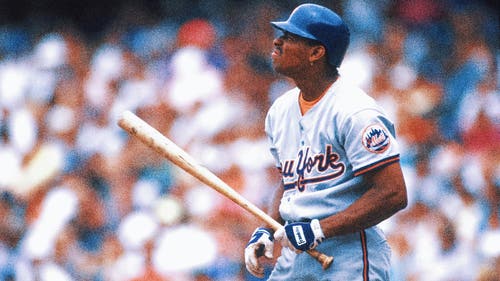
Is Father Time finally catching up with Tigers' Cabrera?

It had become a standard Labor Day weekend conversation piece in this part of the world, even more popular than those musings about the Detroit Lions’ quixotic effort to win a playoff game.
Who will be Miguel Cabrera’s competition for the MVP?
In the last two years, the discussion reached another octave:
How about the Triple Crown?
Cabrera managed to do that once, in 2012, but the larger story was the consistency of his hitting brilliance. From 2009 through 2013, he was unquestionably the best hitter in the game. The 1.018 OPS, the 711 runs created, the 190 home runs, the 530 runs scored — all were the best in the majors over that span. He won three AL batting titles in a row.
In those five years, here were his finishes in the AL MVP balloting: Fourth, second, fifth, first, first. According to STATS LLC, only two players in baseball history have at least two MVP wins and three top-five finishes in the same five-year span: Yogi Berra and Barry Bonds. That’s it. Cabrera’s preeminence in this period of American League baseball has been historic.
But the streak of top-five finishes will almost certainly end this fall, and no one can be too certain what that means. Did Cabrera’s dominance merely go on hiatus for one year, bookended by recovery from core-muscle surgery at the beginning and a clearly debilitating right ankle injury now? Or is this the first indication of a gradual decline, reminiscent of the player whose career he has mirrored in so many ways?
When Cabrera arrived in Detroit six seasons ago, then-Tigers manager Jim Leyland spoke of Albert Pujols as the “total player” to which his young superstar should aspire. Cabrera met that challenge, succeeding Pujols as the game’s best hitter.
The Cabrera-Pujols comparison resonates today, albeit in a different way. Cabrera entered Wednesday with an .875 OPS, the lowest of his career over a full season. He is 31, the same age at which Pujols posted what was then the lowest OPS of his Cooperstown-worthy career, .906.
That year, 2011, also was the most recent time Pujols finished among the top five of an MVP vote. In the three seasons since, Pujols has an .817 OPS and zero All-Star appearances. He remains capable of batting third in a first-place lineup, as he’s done nearly every day for the Angels this year. He still has a good chance to reach 100 RBI for the season, a still-hallowed benchmark among run producers. But Pujols has relinquished his dominance over the sport. A similar future could await Cabrera — who has nine years and $270 million left on his contract.
Cabrera and Pujols are very similar in their professional pride and genius-level baseball IQ. And Cabrera, like Pujols, possesses enough skill and savvy to will his way to .300 batting averages and 100-RBI seasons, even as his body wears down.
Indeed, Cabrera is doing that right now: He runs on and off the field with a slight wobble, because of a significant right-ankle injury that is having an undeniable effect on his power. Cabrera can’t push off his right foot, and so he’s not squaring up the baseball with the same frequency. He isn’t saying much about how he feels these days, but the numbers speak for him: He has one home run in his last 133 plate appearances. That is the longest such drought of his career.
Cabrera, with 17 homers all year, is on pace for the lowest output over a full season in his career. And yet, he was a deserving All-Star for the ninth time. Despite the drop in home runs, he’s on pace to hit better than .300 with 100 RBI for the sixth consecutive year, furthering the longest active streak in the majors.
“This guy’s been doing it for 12 years,” said Yankees second baseman Martin Prado, a childhood friend of Cabrera’s in their hometown of Maracay, Venezuela. “For 12 years, people always expect good things (from) him, and he has delivered. For 12 years. Now all of a sudden, this guy’s hitting .310 with (17) home runs, and he’s got almost 90 RBI, and people are asking about that. You know how hard that is, to drive in 90 runs in the majors and hit .310?
“This life is so demanding, and I feel like everything is turning. If you do it, it doesn’t matter how many years you do it. The year you don’t do it, you don’t deliver, everybody says, 'Oh, something’s wrong.' Nothing’s wrong. It’s baseball. You’re not going to have the same years, every year.”
Prado is right: This isn’t Cabrera’s fault, per se. The drop in production is largely attributable to two injuries — which shouldn’t be a surprise, when considering the normal aging curve of a power hitter. Among Cabrera’s most commendable career achievements is that he’s never spent a day on the disabled list — an honor he’s likely to maintain through this season, even in his hobbled state, with the September roster expansion mere days away.
But it’s noteworthy — and possibly concerning to the Tigers — that last year’s sports hernia and this year’s ankle issue were not momentary, freakish occurrences. These are things that happen with 31-year-old athletes.
When I mentioned that Cabrera is playing through pain during back-to-back stretch runs, Prado replied, "Can you understand why? This guy’s been playing every day for 12 years. He might have a day off, here and there, but he averaged more than 155 games a year. Just think about that. It’s hard. And he’s not a young kid, like he was 10 years ago.”
No. He is not. And if Cabrera is going to be part of another MVP debate, Father Time will prove to be a more formidable foe than Mike Trout ever was.










